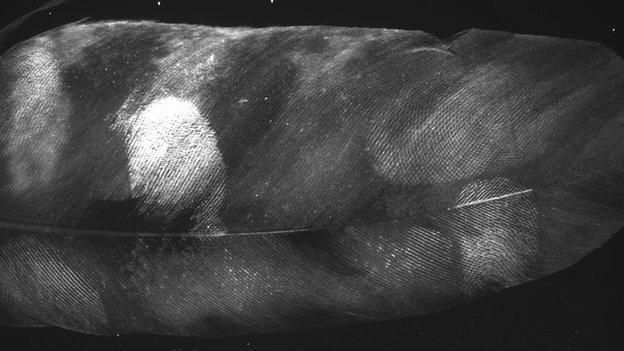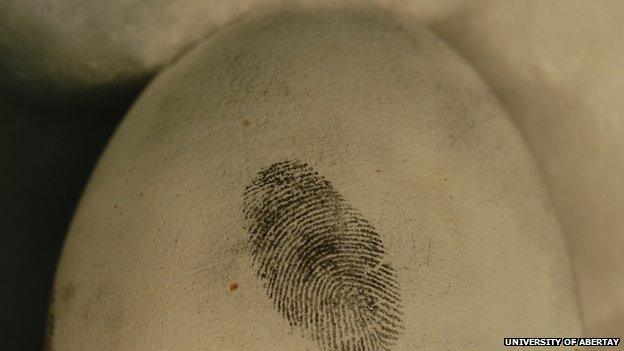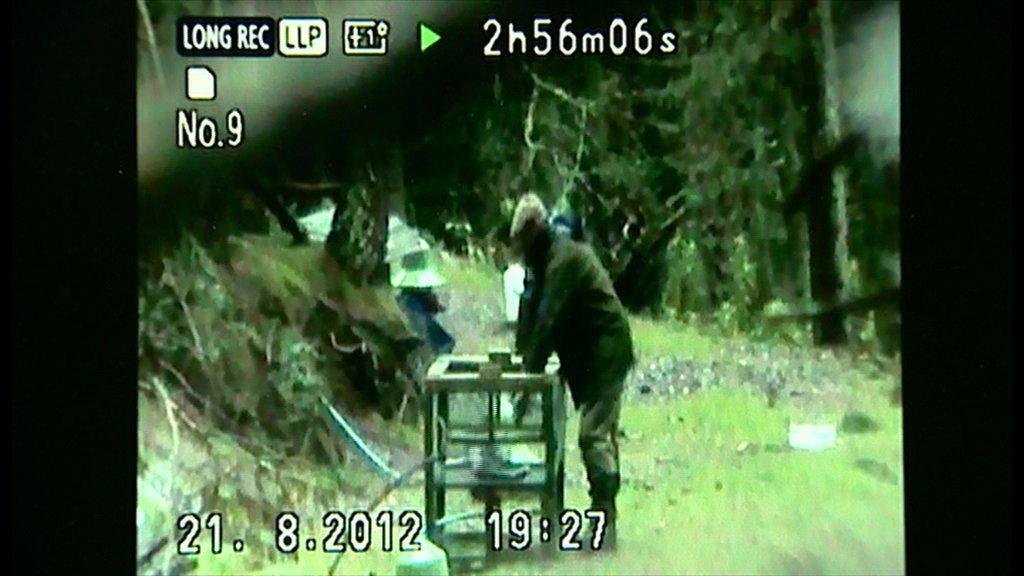Fingerprints 'breakthrough' for wildlife crime investigators
- Published

The researchers lifted fingerprints from the birds' feathers using fluorescent powder
Scientists say they have made a forensic breakthrough in the fight against wildlife crime.
A team from Dundee has been able to recover fingerprints from the feathers of birds of prey, which are under threat from illegal poisoning, shooting and trapping.
If the birds have been handled, the incriminating marks could help police to identify the suspect.
The research is published in the journal Science and Justice, external.
The RSPB's latest figures , externalreveal that in 2013 there were more than 120 confirmed incidents of shooting, trapping and poisoning of birds of prey in the UK.
It is a problem also seen elsewhere in Europe and in other parts of the world.
But scientists say that if the dead birds have been handled, possibly when they were discarded, crucial fingerprint evidence can now be gathered.
A team from the University of Abertay, in Dundee, has shown for the first time that the incriminating marks can be lifted from the birds' feathers using fluorescent powders.

White tailed eagles are just one bird of prey species that have been targeted by wildlife criminals
Lead scientist Dennis Gentles said: "We use fluorescent powder because fluorescent powder will glow if it's put under a laser light, and because it glows it separates itself completely from the background.
"That makes it nice and clear to record and hopefully identify as someone's particular fingerprint."
The team was able to recover prints from the feathers of six species that they tested: kestrels, sparrowhawks, buzzards, red kites, golden eagles and white-tailed eagles,
"We found the best way of doing it was to use the flight feathers: they sustain a fingerprint because they have a nice tight weave to them," said Dr Gentles.
He added: "Before we've had birds of prey found lying at the bottom of a steep mountain and wondered how they've got there.
"People have been able to analyse them to see the cause of death. But if they look at the bird now and fingerprint the flight feathers, they will be able to see if the bird has actually been handled.
"If they find a fingerprint this would raise suspicions and it may even identify the person who has handled this bird and disposed of it in this way."

The scientists were also able to recover fingerprints from golden eagle eggs
The researchers also recovered fingerprints from eggs using black magnetic powder, which could help police to track down and prosecute illegal collectors.
Ian Thomson from RSPB Scotland said: "While government laboratory testing has made it relatively straightforward to identify the cause of death of the victims in many cases, identifying the perpetrator of offences that often take place in some of the remotest areas of our countryside continues to be very difficult."
He said the study was a "step forward" in the development of forensic techniques".
Follow Rebecca on Twitter, external
- Published6 November 2014

- Published12 January 2015

- Published10 May 2011